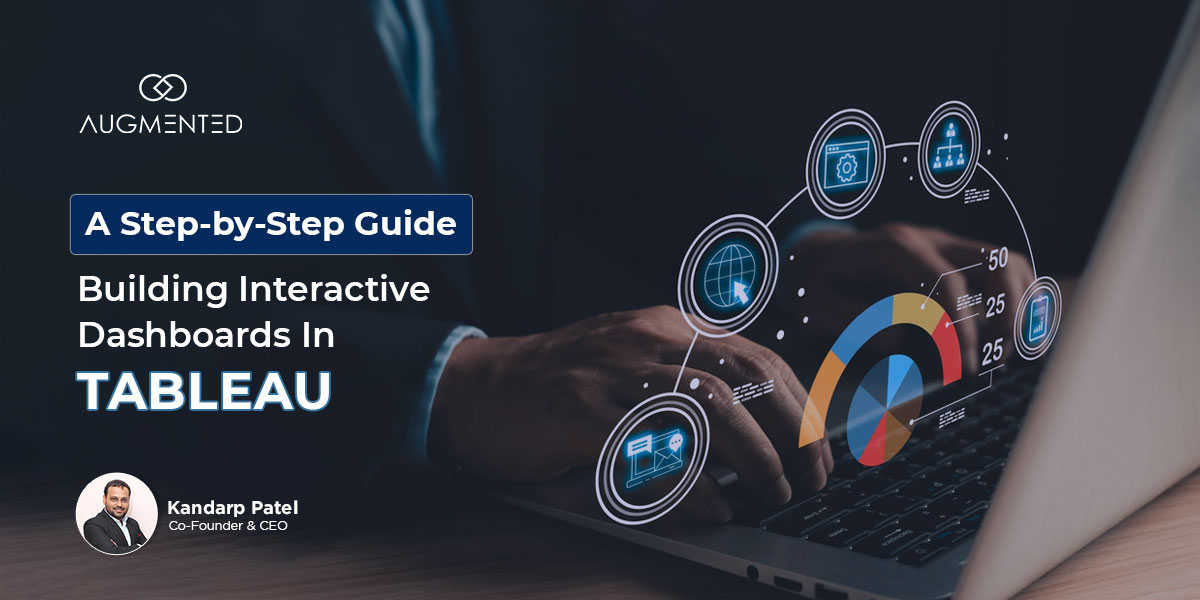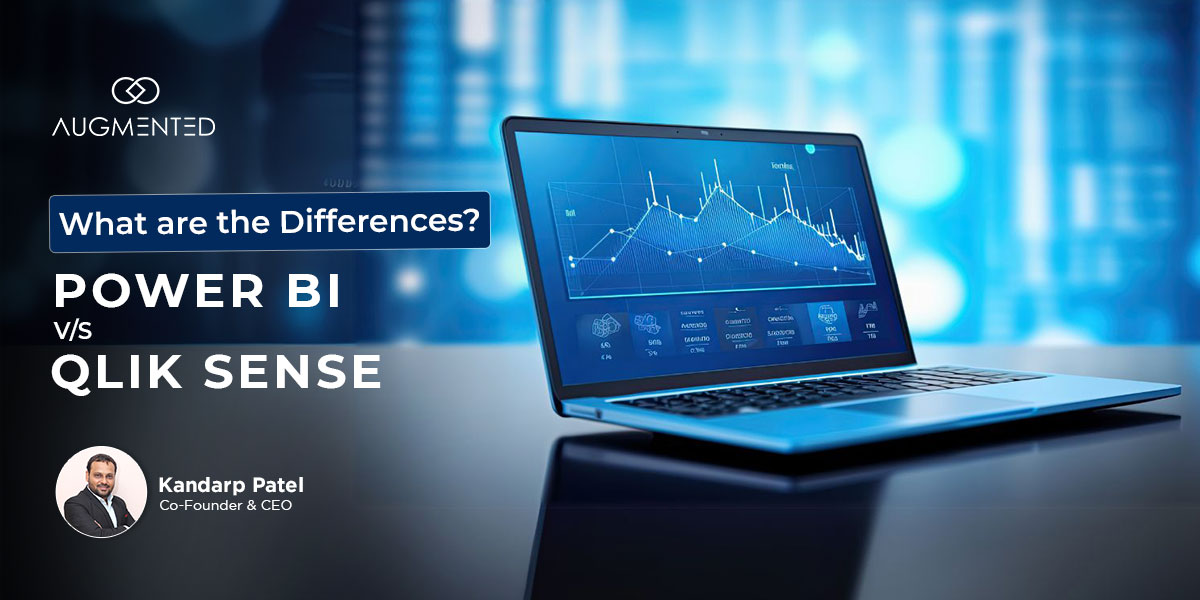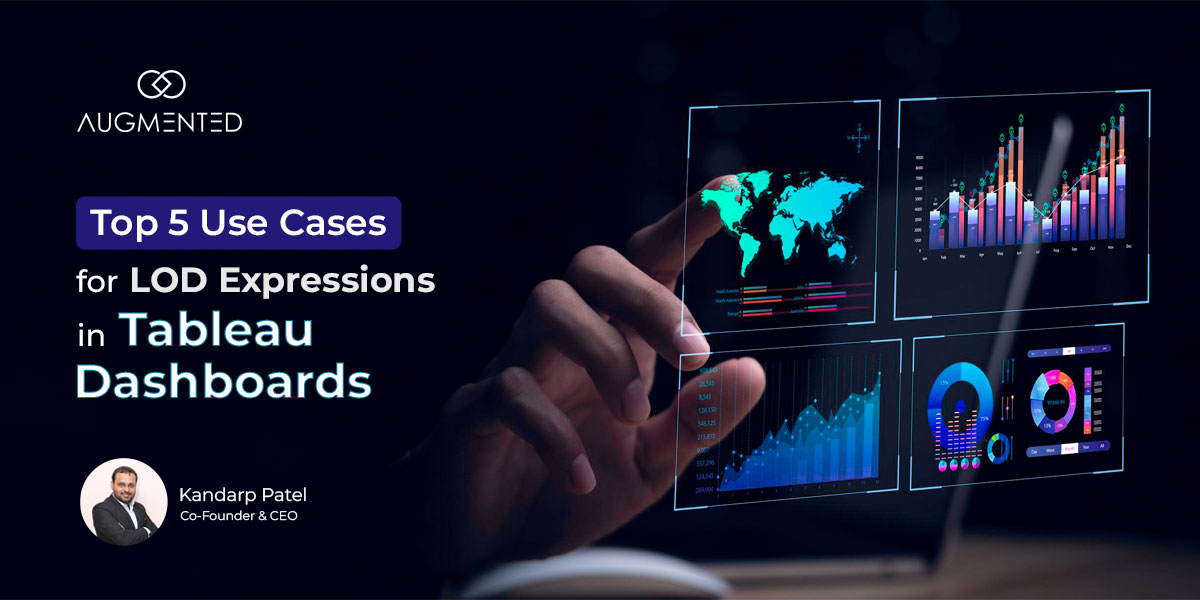Doesn’t it feel overwhelming when you try to make sense of vast amounts of raw data?
As a business owner, I completely understand how challenging it can be to convert all that complex raw data into actionable insights.
It all comes with the stress of:
- Ensuring accurate data,
- Finding a reliable business intelligence solution, and
- Using the power of analytics to create a decision-making process
What if I told you there’s a way to simplify this process? An interactive dashboard in Tableau can provide clear and actionable insights from huge and complex datasets.
It’s basically a way of Data visualization, which is a graphical representation of data that helps you effortlessly identify trends, patterns, and relationships.
There are plenty of data visualization tools on the market, but Tableau does its job best. Business owners rely heavily on it to monitor key metrics, extract clear and actionable insights from their collected data, and make informed decisions at a glance.
In this blog, I’ll share the exact process of creating an Interactive Dashboard in Tableau and how you can benefit from it.
So, without further ado, let’s dive in!
What Is The Purpose Of A Tableau Dashboard?
Your management team may come from a non-technical background, and Tableau is user-friendly and caters to them. But it’s not just limited to that; there’s more to it.
1. Data Consolidation
While running a business, you may deal with multiple reports in Excel, spreadsheets, or SQL. What I personally like about Tableau is that it consolidates the reports from various sources and brings them into a single view, so I get a clearer picture of all the data in one place.
2. Real-Time Data Monitoring
Instead of waiting to get your reports generated from multiple sources, you can use Tableau for instant access to your business metrics. This way, you can track your business progress instantly and stay updated with the information.
3. Decision Making
In Tableau, all your business-related data will be presented to you in an interactive form. So you can dig deep into all the historical data and add or remove parameters. This data will help you in forecasting the demand for your product or service, eventually leading to better decision-making.
4. Interactivity
Tableau is also well-known for its interactivity! You can customize your view, filter the data, use a single metric or even zoom into a timeline. Simply put, it gives you the flexibility to explore and analyze your data in any possible way that suits your requirements.
5. Analysis
Tell me why you want to look into these dashboards. It’s for detailed analysis, right? A tableau dashboard helps you perform a deep analysis of your data, monitor key performance indicators, and get a connection from past events. This way, you’ll be able to find areas of improvement in your business for better outcomes.
So you see, these are some of the reasons why Tabluae is one of the first choices when it comes to choosing from various data visualization tools.
What Are The Different Types Of Tableau Dashboards?
So, before we discuss how to create Tableau Dashboards, we must understand the types of dashboards offered in Tableau. There are three different types of dashboards that you can use:
1. Operational Dashboards
Operational Dashboards track the real-time performance of your daily business activities or operations. These dashboards come with numerous metrics to choose from, such as website traffic, inventory, and sales. Thus, you get instant visibility into your daily data and can take quick action if things start to go wrong.
2. Strategic Dashboards
Strategic dashboards are designed to help you achieve your long-term goals. They are mainly used by analysts and executives to create an effective decision-making process. A strategic dashboard analyzes historical data and helps you analyze and prepare detailed reports on your business's past performance. Thus, you get a high-level overview of your business health, including growth patterns and KPIs.
3. Analytical Dashboards
Analytical Dashboards allow you to track the ongoing performance of your company and create strategies accordingly. Think of it as your go-to tool for finding trends, making projections, and identifying opportunities for improvement.
Now that we’ve explored the benefits of using Tableau Dashboards and the various dashboards it offers, let's discuss how to build an interactive dashboard in Tableau from scratch.
How To Build An Interactive Dashboard In Tableau?
It’s time to walk you through a short Tableau dashboard tutorial. This step-by-step process will help you understand how to build a fully functional and interactive Tableau dashboard clearly and easily. While you go through the steps, you’ll find some of the best practices for Tableau Dashboards.
Step 1: Preparing Data for Tableau Dashboard
The first and foremost thing is to select the data you want to visualize. It may be demand forecast, budget, trading volumes, fleet fuel consumption sales, conversion rates, etc. All the data comes from various sources and you need to connect them with Tableau. Here’s how you can do it.
- Step 1: Launch Tableau Desktop
- Step 2: Click “Connect to data”
- Step 3: Select your data source (Excel, SQL, Google Sheets, etc.).
- Step 4: Choose the required table and preview the dataset.
Messy data? No problem! Tableau provides built-in data cleaning tools to refine your dataset before visualization.
- Handle Null Values: Removes or fills in missing values to avoid incorrect insights.
- Filter Irrelevant Data: Uses the Data Interpreter to automatically detect unnecessary fields.
- Rename Fields: Ensures meaningful column names for easy reference.
Step 2: Load and Connect Your Data
Once your data is prepared, it’s time to bring it into Tableau and optimize it. Tableau can automatically detect data types such as:
- Strings: Text values like names and categories.
- Numbers: Whole and decimal values.
- Dates & Times: Temporal data for trend analysis.
- Geographical Data: Locations like states, countries, and latitudes or longitudes.
Plus, it also offers advanced data modeling features like:
- Pivot Columns: Reshapes wide datasets into a vertical format.
- Create Calculated Fields: Generates new insights directly in Tableau.
- Use Level of Detail (LOD) Expressions: Analyzes data at different levels without affecting aggregations.
Step 3: Create Essential Visualizations
Now, I am going to discuss the part that you all have been waiting for: building interactive charts and graphs!
Let’s understand this by taking an example of a dataset with:
- States (String): 20 states
- Regions (String): 5 regions
- Latitude & Longitude (Geography): Geolocation coordinates
- Dates (Date & Time): April 1, 2025, to May 30, 2025
- Usage (Decimal Numbers): Power consumption in Megawatts
Next, you need to convert the raw data into meaningful charts. You’ll have the option to choose from the following:
- Bar Charts: Compares categorical values.
- Line Graphs: Shows trends over time.
- Maps: Displays geospatial data like power consumption per state.
- Heatmaps: Highlights high and low-performance areas.
Here’s how you can visualize the data:
- Step 1: Just select the data field from the left panel.
- Step 2: Drag it into the Rows/Columns shelf in the Worksheet tab.
- Step 3: Choose the appropriate chart type from the "Show Me" panel.
Pro Tip: You can optimize your dashboard’s performance by reducing unnecessary calculations and using Extract Mode for large datasets. To learn more about data visualization components in a more detailed manner, click here.
Step 4: Add Interactivity with Filters, Parameters, and Objects
You can make the dashboard more interactive when you add Filters, Parameters and Objects.
Adding Filters
Filters will allow you to get into specific data points. So, to add filters:
- Step 1: Click the drop-down menu on any field.
- Step 2: Select “Show Filter”
- Step 3: Choose filter type (Dropdown, Range, Multi-select).
- Step 4: Apply it to multiple sheets if needed.
Adding Parameters
Parameters let you change the dashboard views. For example, you can create a parameter for "Year Selection" and link it to charts so you can toggle between the years.
Adding Objects
- Step 1: Go to Dashboard Layout.
- Step 2: Drag Text Objects for titles & explanations.
- Step 3: Insert Images & Icons for better visuals.
Step 5: Assembling the Dashboard
Once you are done with the individual visualizations, you need to combine them to form a single interactive dashboard. Follow these steps to create one:
- Step 1: Click New Dashboard
- Step 2: Drag sheets onto the canvas.
- Step 3: Arrange charts logically (e.g., KPIs on top, detailed charts below).
Step 6: Publishing & Sharing
Finally, it’s time to share the dashboard you have created with your colleagues. You can publish it to the Tableau Server or Tableau Public.
- Step 1: Click “File”
- Step 2: Publish to Tableau Server for internal use.
- Step 3: Choose Tableau Public if sharing publicly.
- Step 4: Set refresh schedules for live data updates.
- Step 5: Managing User Permissions
- Viewer: You can view but cannot edit.
- Editor: You can edit and modify dashboards according to your convenience.
- Admin: You get total control over access and permissions.
So, with that set, you have gone through a complete tableau dashboard tutorial. From here on, a tableau dashboard creation will become super easy for you.
Let Your Tableau Dashboard Bring Clarity To Your Data
Now, you are equipped with the knowledge of how to build an interactive dashboard in Tableau.
Through this blog, we have discussed how to build an interactive dashboard in Tableau and its benefits. If you follow this detailed guide, I can guarantee that you’ll be able to create a well-structured dashboard. You’ll also be able to create it with interactive visualizations that will drive data-driven decision-making.
You may not even need to take the challenge of creating an interactive Tableau dashboard all by yourself. You can simply work with an expert to help you leverage the capabilities of platforms like Tableau.
So, if you want to supercharge your productivity and make data-driven decisions, why not reach out to us?
Our data visualization services are designed to bring out and identify critical insights from your data and support your business in growth and innovation. Our data visualization experts at Augmented Systems has a proven track record. Reduced data analysis time by 55% and increased productivity by 68%!
So what are you waiting for? Contact us today and start making smarter decisions for your business!
FAQs
1. What is Tableau Dashboard
A Tableau Dashboard shows various types of visual data in one place in graphical form, such as bars or charts. It displays complex data or key metrics in an easy-to-understand form to improve business decision-making.
2. How many types of dashboards are there in Tableau?
In Tableau, the dashboards are categorized into three parts:
- Operational Dashboard: Track the real-time performance of your daily business activities so you get instant visibility into your daily data
- Strategic Dashboard: Looks into the historical data and helps you analyze and prepare detailed reports on the past performance of your business.
- Analytical Dashboard: Tracks the ongoing performance of your company, letting you find trends, make projections, and identify opportunities for improvement.
3. How do I add interactivity to my Tableau dashboard?
Adding filters, parameters, and action buttons is a simple way to add interactivity to your Tableau Dashboard.




